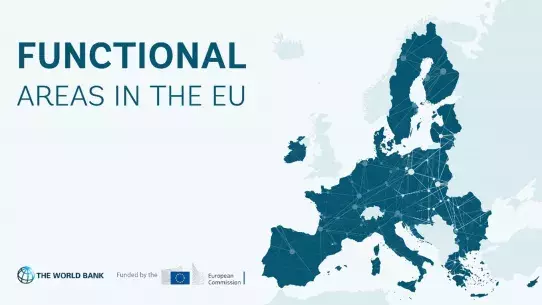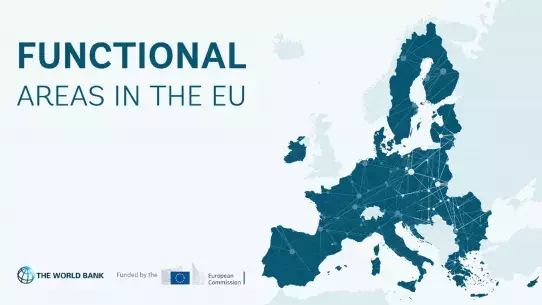Handbook of SUD strategies Chapter 4 - Cross Sectoral Integration

Introduction
Urban issues cannot be tackled using sectoral policies alone. Their complex nature implies that various dimensions of the problem are interlinked, mutually reinforcing each other. For this reason, solving urban questions requires cross-sectoral integrated strategies, built on a wider information base, and tackled through more collaborative governance (see also Governance chapter). Creating integrated strategies means covering gaps and blind spots in policy-making, and reconciling urban planning with other urban-related policy sectors (Leipzig Charter on Sustainable Cities, 2007; Pact of Amsterdam, 2016).
The concept of sustainable development, as introduced by European and global organisations, highlights the complementarity of actions in multiple policy areas – namely: the social, economic and environmental areas – in setting local governments trajectories and goals. The United Nations' (UN)New Urban Agenda (2016) has set the need for broad cross-sectoral and cross-level integration as one of its fundamental requirements for policy and institutional change. According to the Agenda, cities should aim to achieve ‘an enabling environment and a wide range of means of implementation, including access to science, technology and innovation and enhanced knowledge-sharing on mutually agreed terms, as well as capacity development and mobilisation of financial resources’ (NUA, 2016). The UN’s Sustainable Development Goals emphasise the importance of implementing them jointly, with them being intertwined and multi-dimensional concepts. According to the Organisation for Economic Co-operation and Development (OECD), ‘enhanced policy coherence for sustainable development can help identify and manage these relationships and limit or overcome any negative impact’. To this end, ‘an effective and inclusive institutional mechanism to address policy interaction across sectors and align actions between levels of government’ is required (OECD, 2019).
For the European Commission (EC), integration is a key dimension of cohesion policy. Within this context, integration means coordination between policy areas (horizontal), between different levels of government (vertical) and across different territorial scales and areas (territorial) (see Introduction). The cross-sectoral approach, more specifically, describes the need to overcome the ‘silos’ structure, meaning the sectoral/policy field division of functions characterising public organisations. The cross-sectoral approach entails both a horizontal and vertical dimension, referring in the former case to the relationship between departments in the same administration and in the latter to departments working in different administrations, or between government departments and external/private providers of services.
Cross-sectoral integration therefore means:
- ensuring coherence in policy-making principles and objectives among different policy sectors in public administrations, and aligning priorities and timeframes;
- collaboration among different departments, and across levels, in order to co-produce policies.
For an effective cross-sectoral integration to take place, all levels of administration should first agree on a form of collaboration conceived of as more than a purely organisational effort where powers and responsibilities are left unquestioned.
According to this principle, a cross-sectoral approach must be used, and must be based on explicit local needs and problems. The main aim of the approach is in fact to anticipate and contrast possible negative externalities of one-dimensional policies at local level, in order to avoid conflicting consequences and to make interventions in cities more effective (EC, 2019). Going beyond an immediate sectoral answer, considering how it can benefit from, or at least not jeopardise, other strategic objectives, raises awareness of the broader system in which every urban intervention is embedded. Furthermore, the approach allows administrations to add value to less institutionalised or more categorised issues (like gender, migration, climate change, etc.), building a multi-faceted and more effective answer to apparently straightforward traditional problems (building a new housing complex, opening a new school, introducing a new bus line, etc.). This flexibility is supposed to be further enhanced in the next programming period (2021-2027) by the introduction in the proposed regulations of policy objectives (POs) with broader scope, in place of the sectoral thematic objectives (TOs). Integration of funds at higher levels of EU architecture is intended to allow more freedom at all administrative levels, while maintaining a consistent framework.
The cross-sectoral integrated approach, though, is different from the ‘holistic model of sustainable city development’ (EC, 2011). The two are actually complementary: the holistic model provides a comprehensive view and guarantees overall coherence among policies, ensuring that no dimension is left behind; the integrated approach introduces a pragmatic perspective, producing added value from the joint consideration of multiple policies, building on governance capacity and funding and implementation instruments. Sustainable Urban Development (SUD), as envisioned in the 2014-2020 funding programme, can enhance cross-sectoral policy-making in this direction (Czischke & Pascariu, 2015), providing the framework for synergies among institutions and setting the stage for organising urban policies in accordance with multiple resources. According to Article 7 of European Regional Development Fund (ERDF):
Integrated urban strategies should be comprised of interlinked actions which seek to bring about a lasting improvement in the economic, environmental, climate, social and demographic conditions of urban areas. Whilst the operations supported by ESI funds need not cover all these elements, the wider strategy must take account of all the aspects listed. […] interrelated and interlinked, it means that actions should not be proposed and funded in complete isolation from each other, but rather that they should be developed within the context of a wider integrated strategy with the clear aim of creating a coherent and integrated response to the problems of the urban area concerned. (EC, 2016, p.8).
Against this backdrop, cities have been asked to shape cross-sectoral integrated policies and projects, adopting this approach throughout the policy cycle. Strategic planning is based in fact on an agreement between actors, whose partnerships must consider a number of cross-cutting issues in their work. These cross-cutting issues help to ‘connect the dots’ within and between thematic partnerships.
From this point of view, cross-sectoral integration is useful in overcoming possible bottlenecks in strategy and policy-making.
But while the formulation of urban strategies should be realised in an integrated way almost by definition, the phases of their implementation can be more difficult. Overcoming sectoral division is not a solution to every problem (URBACT, 2019). Authorities and officials willing to engage in cross-sectoral integration have to deal with any challenges.
In this chapter, cross-sectoral approach will be discussed in relation to two main components:
- cross-sectoral integration within cohesion policy structure, where the main challenges involve creating an enabling environment for integration at all levels, and dealing with existing conditionalities to guarantee that other cohesion goals are met – namely, thematic concentration;
- cross-sectoral integration in territorial governance, where local actors struggle to overcome the strict internal organisation of territorial administrations, and to include a wide range of public and private actors in the implementation of cross-sectoral projects.
Part 1 : Cross-sectoral integration within cohesion policy structure
Sustainable Urban Development in the EU’s cohesion policy aims to promote complementary actions in multiple policy areas.
The structure and regulations of cohesion policy funds set the principles for enhancing these synergies through a process of selection and interpretation of the dimensions involved in development disparities. Themes and bundles of themes selected by the EC for the distribution of its funds – namely thematic objectives and investment priorities (IPs) – are therefore those able to tackle the problems of unbalanced development, but also those for which the EC’s contribution can be more effective in smoothing the process of policy implementation.
Member States and regions shall ensure that the interventions supported by ESI funds are complementary and are implemented in a coordinated manner with a view to creating synergies, in order to reduce the administrative cost and burden for managing bodies and beneficiaries […]. (Annex I, 3.1.2, Common Provision Regulation).
The ‘urban’ dimension of development, in particular, acts as a boundary object, enabling collaboration between the EU and territorial authorities. More broadly, urban development related Priorities and Programmes help to enhance a multilevel and cross-sectoral governance system.
Managing authorities (MAs) especially should guarantee the integration of all the relevant themes in SUD strategies, smoothing mismatches between local and cohesion policy objectives and guaranteeing proper technical support to local authorities (LAs). In relation to cities’ needs, and cohesion policy progress, issues and effectiveness linked to funds can vary, requiring those bundles to be reframed, as well as the conditions for their use. For this reason, the architecture of funds, in its evolution from one programming period to the next, has tried to enhance flexibility and has proposed new instruments.
Nonetheless, the analysis of SUD strategy-making in the current programming period (2014-2020) has highlighted the difficulties encountered by both MAs and LAs in integrating different thematic objectives and, eventually, including more European Structural and Investment (ESI) funds in the design and implementation of SUD strategies.
All these difficulties can be classified into two main challenges as follows.
Part 1 : Cross-sectoral integration within cohesion policy structure
Learn morePart 2 : Cross-sectoral integration in territorial governance
ESI funds coordination allows silos to be broken down, synergies to be identified and complementarities among policy fields to be found. For this reason, the realisation of an SUD strategy is also an opportunity to overcome existing sectoral barriers inside territorial administrative organisations.
This expectation requires not only a focus on instruments, in which funds and topics are integrated according to specific rules, but also a focus on the establishment of collaboration between actors and departments across local governance structures (see Governance chapter for a broader discussion on collaboration between actors). In this way, the role of strategies in merging interests and stakeholders is enhanced, as well as the capability of regions and cities to cultivate a stable and long-term integrated sustainable development process.
Policy integration at this level has been traditionally understood as mainly related to the management of human resources and efficiency objectives. The literature on policy integration is dominated by empirical analysis and is mainly dedicated to facing the complexity relating to specific cross-sectoral topics (in particular, especially at the beginning of its diffusion, to environmental protection and climate change issues) (Tosun & Lang, 2013).
While this is still true, cross-sectoral integration as promoted by the EU also has the ability to boost innovation, not only erasing boundaries between sectoral policies, but also redrawing them (Rode et al., 2017).
Moreover, within the multi-level governance of SUD strategies, silos can be different at national, MA and LA levels. Vertical integration using cross-sectoral policies can imply delegation of powers and responsibilities and emphasise the role of politics in pursuing a more centralised or decentralised approach.
Due to its innovative character, cross-sectoral integration has to deal with multiple bottlenecks, linked in particular to actors’ preferences and more generally to challenges in framing multiple interests (Tosun & Lang, 2013).
Finally, the level at which the integration takes place carries different meanings, and different goals, depending on practice. Cross-sectoral integration during implementation, especially, can be challenging.
Part 2 : Cross-sectoral integration in territorial governance
Learn moreAbout this resource
The Joint Research Center – Territorial development unit supports the territorial articulation of the EU policy agenda, its external investment and global outreach. Our aim is to deliver world-class science-for-policy support to bring Europe closer to citizens and places, turning territorial diversity into value.
Similar content




